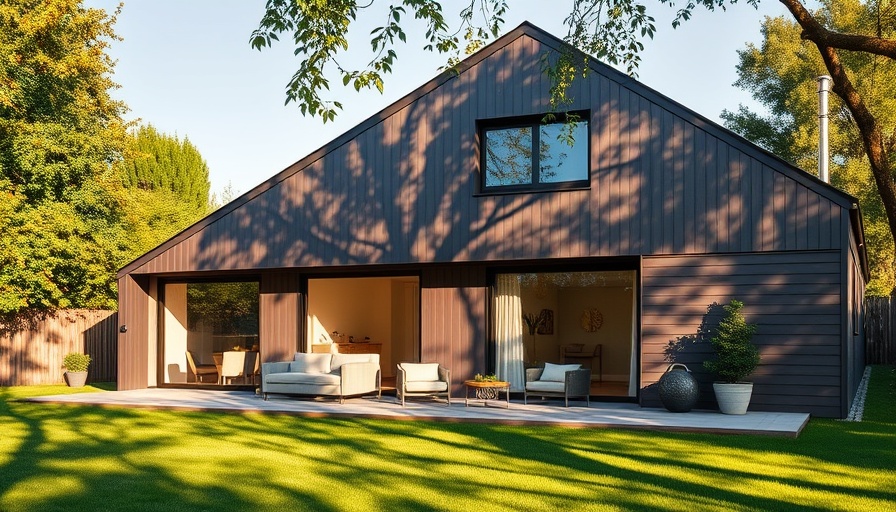
Elevating Home Exteriors with a Sustainable Choice
For young homeowners in London, the challenge of selecting the perfect exterior cladding goes beyond mere aesthetics. It encompasses sustainability, longevity, and how well it harmonizes with the community vibe. Enter painted thermally modified wood cladding, a product that promises to transform your home's facade while being environmentally responsible.
Understanding Thermally Modified Wood
Thermally modified wood undergoes a specialized heating process that alters its cellular structure. This treatment enhances its resistance to moisture, decay, and pests without toxic chemicals, making it an eco-friendly alternative to traditional timber. Its ability to withstand the damp, unpredictable British climate means you enjoy long-lasting beauty without the burden of frequent maintenance.
A Premium Solution for Modern Homes
Thermory, leading in this innovative wood treatment, showcases products like the Vivid Series. These not only boast excellent durability but also offer a stunning array of factory-painted finishes that can elevate your home’s aesthetic. Whether you're looking to maintain a rustic vibe or go bold with vibrant colors, there's a design to suit every style.
Why Opt for Painted Thermally Modified Wood?
1. Enhanced Durability and Stability
Thanks to the thermal modification process, the moisture content of the wood is dramatically reduced. This means fewer worries about swelling, cupping, and warping over time. Coupled with natural resistance to rot and decay, this cladding grows increasingly appealing, especially when considering the UK’s notoriously wet weather. Reduced maintenance means more time spent enjoying your beautiful home!
2. Aesthetic Versatility at Its Best
Today's homes are not just structures; they are canvases for creative expression. The palette of colors available with painted thermally modified wood allows you to express your individuality and harmonize with your surroundings. Trendy options like black timber cladding work wonders to add a contemporary edge, pairing perfectly with lighter materials. This contrast creates intriguing depth in design, ideal for both modern residential and commercial spaces.
Embracing the Eco-Friendly Approach
In a world increasingly aware of environmental impact, making greener choices is vital. Painted thermally modified wood not only minimizes chemical treatments but also extends the lifecycle of your building materials. This aligns beautifully with the ideals of sustainable living, allowing you to enhance your home while caring for the planet.
Future Trends in Architectural Design
As we look ahead, expect thermally modified wood cladding to gain even more popularity. Its compatibility with smart technology in homes will bridge the gap between sustainable living and the increasing demands for tech-savvy features. With innovations in construction and design, there’s a growing opportunity for homeowners to create spaces that reflect tranquility, sustainability, and style all at once.
Your Home, Your Haven
Investing in painted thermally modified wood is not just a decision for today; it's an investment in your home’s future. It carries the promise of beauty, durability, and minimal maintenance, allowing every young homeowner to treat their abode like the sanctuary it is. Take charge of your environment—celebrate your style, protect your investment, and contribute positively to your community.
Join the Sustainable Movement
As you embark on your home improvement journey, consider the benefits of painted thermally modified wood. It is not just a smart choice for aesthetics but also a step towards a more sustainable lifestyle. Now’s the time to act!
 Add Row
Add Row  Add
Add 




Write A Comment